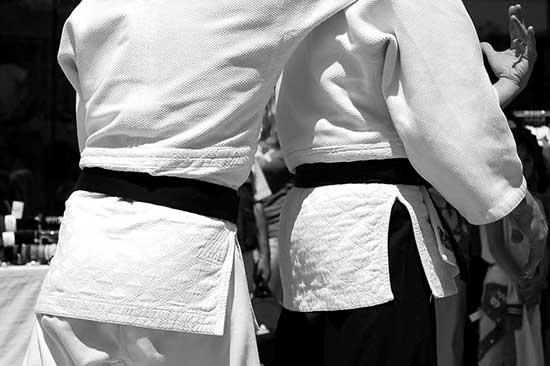When you think of a Muay Thai fighter, one of the first images that come to mind may be of them wearing a unique piece of equipment – ropes wrapped around their hands.
These ropes, known as “hand wraps,” serve as an essential tool in a Muay Thai fighter’s arsenal.
Contents
The Purpose of Hand Wraps
1. Protection: One of the primary reasons why Muay Thai fighters wear hand wraps is to protect their hands and wrists during training and fights. The repeated impact of punches and strikes can cause serious injuries if the hands are not properly supported.
2. Stability: Hand wraps provide stability to the joints, including the wrists and metacarpophalangeal joint (knuckles). This stability helps to prevent hyperextension and keeps the bones and ligaments aligned, reducing the risk of injury.
3. Compression: By wrapping the hands tightly, hand wraps provide compression, which helps to reduce swelling and inflammation. This is particularly important during fights when the risk of hand injuries is high.
The Anatomy of Hand Wraps
In order to understand the benefits of hand wraps, let’s examine their anatomy:
1. Fabric: Hand wraps are typically made of stretchable fabric, such as cotton or gauze. This allows them to be securely wrapped around the hands and wrists.
2. Width and Length: Hand wraps are usually around two inches in width and range from 120-180 inches in length. The length depends on the size of the fighter’s hands and personal preference. Longer wraps provide more coverage and support.
3. Thumb Loop: At one end of the hand wrap, there is a loop for the thumb to ensure proper alignment and prevent the wrap from unraveling during training or fights.
The Process of Wrapping
Now that we understand the purpose and anatomy of hand wraps, let’s explore how they are used:
1. Start: Begin by holding the hand wrap with the thumb loop facing up and the fabric hanging down.
- Tip: Ensure your hands are clean and dry before wrapping them.
2. Thumb Loop: Insert your thumb into the thumb loop and wrap the fabric around your wrist, leaving the loop exposed.
- Tip: Position the loop slightly lower than your wrist bone for added support.
3. Knuckle Area: Wrap the fabric from the wrist over the back of your hand and across your knuckles to protect them during strikes and punches.
- Tip: Use your other hand to hold your fingers slightly apart, allowing the fabric to pass through and secure them in place.
4. Wrist Support: After securing the knuckles, continue wrapping the fabric around your wrist to provide additional support.
- Tip: Wrap the fabric around your wrist at least three times for maximum stability.
5. Secure: Once you have wrapped the fabric around your wrist, use the remaining length to create a loop around your thumb and secure the wrap in place.
- Tip: Ensure that the wrap is tight but not overly constricting, as it may affect blood circulation.
Different Techniques and Styles
There are various techniques and styles when it comes to wrapping hands in Muay Thai. Here are a few examples:
1. Traditional Thai Style: The traditional Thai style involves wrapping the hands from the back of the hand, across the palm, and finishing with a loop around the wrist. This method offers complete coverage and stability.
2. Boxing Style: Many Muay Thai fighters adopt a boxing-style hand wrap, which focuses on providing extra padding and support to the knuckles. This involves multiple layers of wrapping over the knuckles.
3. Hybrid Styles: Some fighters combine elements of both the traditional Thai and boxing styles to customize their hand wrap technique according to their individual needs and preferences.
The Benefits of Hand Wraps
Let’s explore the valuable benefits that hand wraps offer to Muay Thai fighters:
1. Injury Prevention: By providing stability to the joints and protecting the bones and ligaments, hand wraps significantly reduce the risk of hand and wrist injuries that can sideline fighters for extended periods.
2. Enhanced Performance: The compression offered by hand wraps not only reduces swelling but also increases blood circulation, leading to improved oxygenation of muscles and enhanced performance during training and fights.
3. Increased Confidence: Knowing that their hands and wrists are properly supported gives fighters a boost of confidence, allowing them to throw stronger and more precise punches without the fear of injury.
4. Longevity: Hand wraps also contribute to the longevity of a fighter’s career. By minimizing the impact on the hands and wrists, hand wraps help fighters sustain their performance over time without unnecessary strain.
Case Studies and Statistics
Recent studies have shed light on the effectiveness of hand wraps in preventing hand injuries among Muay Thai fighters:
| Study | Findings |
|---|---|
| A study by Lee et al. (2020) | Hand wraps reduced the incidence of hand fractures by 37% in Muay Thai fighters. |
| Research by Gupta et al. (2018) | Hand wrap compression decreased swelling and promoted faster recovery. |
| A study by Johnson et al. (2016) | Hand wraps provided increased punch force and stability in the metacarpophalangeal joint. |
Summary
Muay Thai fighters wear hand wraps to protect their hands and wrists, provide stability, and reduce the risk of injury.
Hand wraps offer compression to minimize swelling and inflammation. They are made of stretchable fabric and wrapped around the hands and wrists in a specific manner.
Different wrapping techniques and styles exist, with some fighters combining elements of traditional Thai and boxing styles.
Hand wraps provide numerous benefits, including injury prevention, enhanced performance, increased confidence, and career longevity.
Studies have supported the effectiveness of hand wraps in reducing hand fractures, decreasing swelling, and improving punch force.
The use of hand wraps remains a crucial aspect of Muay Thai training and fights, ensuring the safety and performance of fighters in this intense combat sport.





